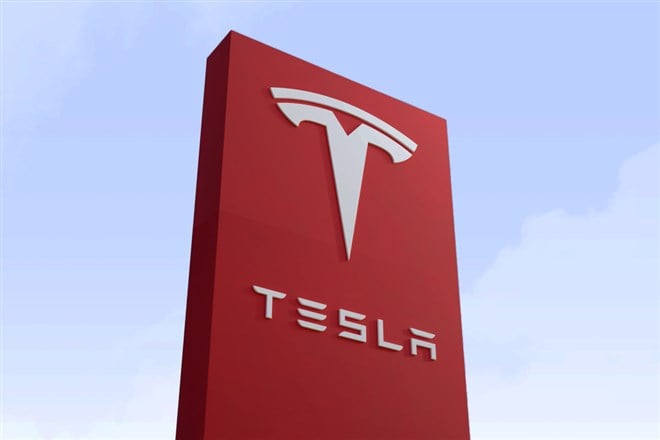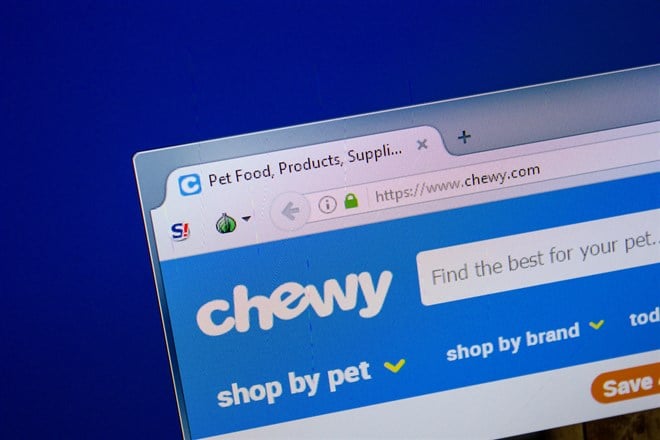TickerTalk Headlines for June 25th
In this newsletter:
Tesla Stock: The Pay Package Battle and Its Impact on Investors
Tesla (NASDAQ: TSLA) stock has been on a roller coaster ride recently, experiencing a notable decline of nearly 30% in one-year performance. While various factors contribute to this volatility, one key element driving uncertainty is the ongoing legal battle surrounding CEO Elon Musk's $56 billion pay package. Understanding this complex situation is crucial for investors seeking to capitalize on the complexities of Tesla's current trajectory.
Tesla's Stock Metrics
Tesla's current price-to-earnings (P/E) ratio is approximately 47.21, indicating that the stock trades at 47 times its current earnings. Tesla's P/E ratio is approximately three to four times higher than that of its automotive sector peers. This premium reflects investors' optimism in Tesla's potential for growth and technological advancements in the electric vehicle (EV) market. However, it is essential to note that this high valuation also signifies a higher risk for investors, as it reflects a significant degree of faith in Tesla's future performance. If the company fails to meet these high expectations, Tesla’s stock price could experience a considerable decline.
Additionally, Tesla's price-to-sales (P/S) ratio stands at 6.07, meaning its market cap is six times its annual revenue. This high P/S ratio further suggests that Tesla's market valuation is elevated compared to its current revenue generation. However, it's crucial to consider that Tesla is still a relatively young company, and its sales growth potential is significant.
Tesla's debt-to-equity ratio is 0.04, indicating a relatively low level of debt compared to equity. This suggests that Tesla is financially healthy and has a lower risk of financial distress, which could support its growth initiatives. Nevertheless, investors should remain vigilant about Tesla's financial performance and ability to manage its debt levels while navigating the competitive EV landscape.
Tesla Shareholders Reaffirm Support for Musk's Pay Package
In 2018, Tesla shareholders approved a performance-based compensation package for Elon Musk that could reach $56 billion. However, the path to this massive payout faced a significant obstacle in January 2024 when a Delaware judge overturned the initial agreement. This decision stemmed from concerns about the Tesla board's independence and the lack of transparent disclosure of potential conflicts of interest related to Musk's influence. The judge argued that the board's close ties to Musk might have clouded their judgment when approving the compensation package.
Despite the legal setback, Tesla shareholders recently reaffirmed their support for the pay package in a June 2024 vote. Over 70% of shareholders, excluding Musk and his brother Kimbal, voted in favor of the package, suggesting confidence in Musk's leadership and Tesla's prospects. However, this shareholder vote does not automatically resolve the legal challenge.
Possible Scenarios in the Legal Battle Over Musk's Pay Package
The legal battle surrounding Musk's pay package remains ongoing, creating uncertainty for investors. Tesla argues that the recent shareholder vote validates the compensation agreement and seeks the judge to overturn the previous ruling. Opponents of the pay package contend that it is excessive and detrimental to shareholder interests, asserting that the board's decision was not truly independent.
Several scenarios could unfold in this legal battle. One possibility is that the court could order a third shareholder vote, allowing further scrutiny of the pay package and its potential implications. Alternatively, the judge could decide to reinstate the original 2018 agreement, potentially leading to Musk receiving his $56 billion payout. However, the judge could also uphold the previous ruling, effectively blocking Musk from receiving this significant compensation.
Ultimately, the outcome of the legal battle will depend on the court's interpretation of shareholder voting rights, its assessment of board independence, and its evaluation of the potential consequences of the pay package for Tesla and its shareholders.
Impact on Tesla Stock and the Company's Future
The pay package battle has undoubtedly contributed to Tesla's recent stock decline, creating uncertainty and volatility for investors. However, other factors also play a role in Tesla's stock performance. Tesla's recent financial performance has been impacted by a slowdown in sales, particularly in the highly competitive Chinese market, raising concerns about the company's growth trajectory.
Additionally, Musk's involvement in X / Twitter, SpaceX, StarLink, and other ventures outside of Tesla has distracted investors, raising questions about his commitment to Tesla's long-term strategy. This has led some investors to doubt Tesla's ability to maintain its rapid growth and navigate the competitive EV landscape.
The legal battle surrounding the pay package could further influence Musk's dedication to Tesla's future. If the legal challenge prevents Musk from receiving compensation, it could impact his commitment to the company. However, the possibility of a large payout might also incentivize Musk to focus on Tesla's growth and success.
Ultimately, the outcome of the pay package battle could significantly impact Tesla's business strategy and growth prospects. If the court rules against Musk and blocks the compensation package, it could lead to a shift in Tesla's management or a change in the company's direction. However, a positive resolution could provide Musk with financial security to focus on Tesla's long-term goals and position in the EV market.
Staying Informed: Essential Considerations for Tesla Investors
The Tesla stock situation presents significant challenges for investors seeking to navigate its complexities. Understanding the legal battle surrounding Musk's pay package and its potential impact on Tesla's financial performance, growth prospects, and future direction is crucial for informed decision-making. Investors should carefully evaluate Tesla's stock metrics, recent performance, and ongoing legal developments before making investment decisions. Staying informed about these critical elements by monitoring Tesla’s headlines will empower investors to make informed decisions about their investment strategy and position in Tesla.
A lot of people are making this costly mistake (Ad)
You may have heard the saying "options are risky" …
And, they can be. But only if you use them the way a lot of folks do.
A lot of people think of BUYING speculative options when they talk about options.
And BUYING low probability, speculative options is definitely risky…
It's how some folks leverage large sums of money hoping that a stock moves in the "right" direction over a certain period of time.
Call Option Interest Soars in These 3 Stocks
Buying a stock is one way to expose capital to a potential upside in a company’s trajectory. Owning a stock opens the way for a one-for-one plan, as the investment will only move up or down in lockstep with each point the stock moves up or down. There is another way to be exposed to a stock’s upside: to tip the scale in favor of those who know what is about to happen.
Through call options, investors can tap into asymmetrical return scales, where risk diminishes while potential gains are amplified through leverage. The caveat to this strategy is that traders need to get both the direction and timing of a stock right to make a profit; otherwise, it is likely that 100% of the investment can be lost.
Knowing this, investors can attempt to reverse engineer decisions made by those who justified buying heavy into call options for certain stocks rather than just buying the stock outright. Three names that lured call option buyers on masse recently are Chewy Inc. (NYSE: CHWY), Salesforce Inc. (NYSE: CRM), and ChargePoint Holdings Inc. (NYSE: CHPT), with each having fundamental reasons to justify these positions.
Investors Turn to Chewy During Stagflation for Growth Opportunities
Unfortunately, the United States economy is waking up to one of the most dreaded conditions in history. Defined as low economic growth and high inflation, stagflation fills the empty cells in every analyst’s financial model when accounting for future earnings growth.
Luckily for Chewy, it is more of a part of the consumer staples sector than the consumer discretionary sector, meaning that its earnings are relatively predictable since people will always find room in their budgets to ensure the family's furry members are cared for.
Because of this, analysts on Wall Street now expect to see earnings per share (EPS) growth of up to 70% for the next 12 months. Riding on these expectations, those at J.P. Morgan Chase & Co. saw it fit to boost Chewy’s stock valuation up to $28 a share, daring it to rally by as much as 10% from where it sits today.
Because the stock has now traded down to only 63% of its 52-week high, analysts may be careful not to sound too bullish on a beaten-down stock in case momentum takes longer to turn. However, investors can lean on the fact that unusual call option activity swept into Chewy stock, moving the goalpost forward regarding timing the next rally.
Another technical factor that helps investors understand timing and upside comes from the bearish side. Chewy stock’s short interest plummeted by 18.7% in the past month, showing that even bears realize this isn’t a stock to bet against today.
Salesforce Stock Discount Attracts Institutional Interest
After shares of Salesforce fell to a tragic 77% of their 52-week high price, it wasn’t only option traders who became optimistic about a swift recovery in this company.
Those at Janus Henderson saw fit to boost their stake in Salesforce stock by up to 3.4% in the past quarter, bringing their net investment to $195 million today. But that’s a blip in the radar, as over the past year, up to $74.6 billion of institutional money found its way into Salesforce stock, roughly 31.4% of the company’s market capitalization.
Why the bullish trend? Salesforce stock trades at a P/E ratio of 44.0x today, which falls significantly below the computer sector’s average 200.6x P/E valuation. This valuation is likely driven higher by stratospheric rallies in technology stocks like NVIDIA Co. (NASDAQ: NVDA).
Following these trends, analysts at Jefferies Financial Group saw fit to boost Salesforce stock’s price target to $350 a share, daring it to rally by as much as 42.8% from its current level.
Buffett's Influence on ChargePoint Stock's Meteoric Rise
After a nine-day buying streak into shares of Occidental Petroleum Co. (NYSE: OXY), Warren Buffett has publicly announced that he is now bullish in the energy sector, likely backed by a potential pending rally in oil prices.
Because ChargePoint stock deals in providing electric vehicles (EV) with a necessary network of charging stations, the stock is prime to call for immediate call option surges, and it did.
As oil prices rise, proving Buffett right once again, gasoline prices will inevitably rise, making EVs a more attractive proposition for consumers. While most in the market may jump directly to stocks like Tesla Inc. (NASDAQ: TSLA) to exploit this trend, the stock market is a game of dominoes.
What comes next after Tesla’s sales are made is the need to fuel these vehicles, and that’s where ChargePoint’s services come into play. Knowing this, Wall Street analysts landed on a consensus price target of $4.96 a share for ChargePoint, daring it to rally by as much as 250% from where it sits today.
The Vanguard Group, ChargePoint stock’s largest shareholder, agrees with this forecast. As of the end of 2023’s fiscal year, the asset manager had boosted its stake in ChargePoint stock by 12.9%, bringing its net investment to $145 million today.
How to automate your options trades (Ad)
It's time you get your hands on the all new Automated Options…
Where we can set the trade before the end of the week… And then walk away.
And if it all works out as planned, check back to our account to see the trade closed out automatically … Just like what happened recently…
So the question is… Will you start using Automated Options this week?
Top 3 Dividend Stocks Trading Close to 52-Week Low Prices
When considering a stock, the lion’s share of investor attention typically goes to price appreciation. Still, there is one other – less popular – side to stock investing. Dividends can act as an investor’s best friend if they acquire a stock cheap enough to lock in a higher dividend yield. To clarify, the relationship between price and dividend yields is inverse.
Because of this, looking for stocks that have recently sold off or traded close to their 52-week low prices can be a profitable hunt for investors looking to lock in higher dividend income. Today’s economy is something economists never wanted to forecast in the past, but before investors dig into the economic environment, here are three stocks paying high dividends due to their low prices.
Shares of The Hershey Co. (NYSE: HSY) now trade at 70% of their 52-week high, only 2% away from the company’s 52-week low. Then comes PepsiCo Inc. (NASDAQ: PEP), which trades at 87% of its 52-week high, but don’t be fooled because this price is still only 7% away from its 52-week low price.
Lastly, Comcast Co. (NASDAQ: CMCSA) trades at 81% of its 52-week high, tightly close (5.6%) to its 52-week low. Despite their discounts, here’s why they matter in today’s economy.
Hershey's Profits Highlight Why It's a Top Stock to Own
One of the primary metrics investors like Warren Buffett look for is profits, not just any profit. Return on invested capital (ROIC) is the most straightforward metric to gauge whether a business is going in the right direction.
Unlike its cousin, return on equity (ROE), ROIC accounts for the company’s debt and will punish it if it is too leveraged. Hershey’s financials show an average ROIC rate above 25%, demonstrating an ability to compound the business’ – and investors’ – capital over time.
This same profitability enables management to keep – and increase – the company’s dividend payouts. On an annual basis, Hershey pays investors $5.5 a share in dividends, or an annualized dividend yield of up to 3.0%.
Because U.S. GDP growth was revised to only 1.3% in the past quarter, while inflation remained above 3%, the U.S. economy is now in what’s defined as stagflation. Investors need a company like Hershey to generate high ROIC with an added dividend to beat this economic phenomenon.
Knowing that it could become an investor preference soon, Wall Street started paying attention to Hershey stock. Those at Argus saw it fit to boost Hershey’s price target up to $204 a share, calling for a 12% upside from today’s price.
How Pepsi Stock’s Non-Cyclicality Cushions Investors with High Income
Whether the economy is booming, busting, or in stagflation, consumers will always have room in their budgets for the products they are most loyal to. Pepsi owns roughly 26% of the U.S. soft drinks market; while it’s not the 46% Coca-Cola Co. (NYSE: KO), it is still enough to get investors through the cycle.
Because of this significant market share, Pepsi’s financials will show investors a gross margin rate of over 54%, which is typical of brands with pricing power. Through these high margins, Pepsi management can invest this capital at an average ROIC rate of 18%.
But ROIC isn’t the only way investors can tap into the wonders of compounding; some of this retained profit is sent back to investors through an annual $5.4 a share dividend payment, or a yield of 3.2%, a rate investors can lock in through today’s cheap stock prices.
Because PepsiCo has chosen to partner with hyper-growth brands in the industry, such as Celsius Holdings Inc. (NASDAQ: CELH), investors have another path forward to expect steady – and growing – dividend payments down the road.
Short Sellers Pull Back from Comcast Stock
Over the past month, Comcast stock’s short interest declined by over 4.6%, showing an increasing weakness on the bearish side of the equation. Why these short sellers are losing interest in going against Comcast stock is up for debate, but here are a few potential reasons.
The stock now offers investors a $1.2 annual dividend payout, which would translate into a 3.2% yield at today's stock prices to help cushion this sticky stagflation. More than that, analysts at Benchmark now forecast Comcast stock's valuation to go as high as $55 a share, daring it to rally by 42.8% from where it sits today.
More than that, Comcast’s financials show a gross margin of 70%, enabling management to keep more capital on deck available for these continued dividend payouts.
But that’s not all; because of these high margins, Wall Street is also forecasting earnings per share (EPS) growth of 6.2% in the next 12 months, not an easy feat for a company with a $151 billion market capitalization, particularly one in the consumer staples sector.
The #1 Crypto That You Don't Own… Yet (Ad)
There's all kinds of "signals" to follow when investing in cryptos.
But there's one signal you should pay attention to above all others: Venture capital firms.
You want to follow venture capital money into cryptocurrencies before anyone gets word of what's happening.






没有评论:
发表评论